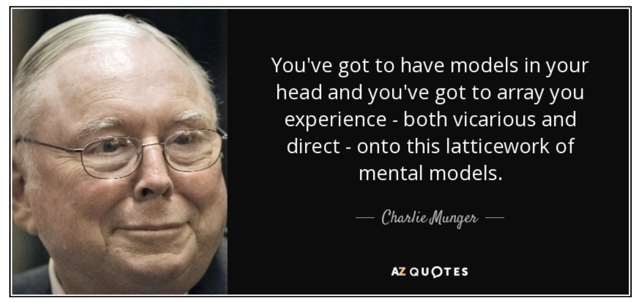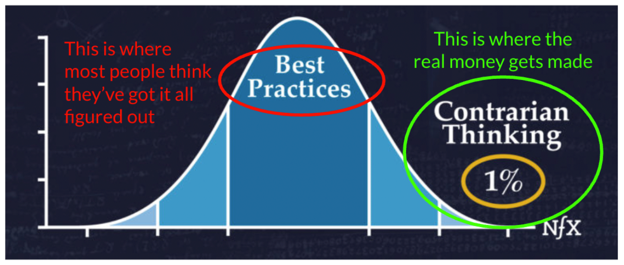Part 2: Model the Masters – How Elite CEOs Actually Think

In the last article, we reframed what it really means to be a CEO—not just in title, but in function.
We challenged the default scorecard (“How good am I as a CEO?”) and replaced it with a more powerful question:
What are the few essential things that top-tier CEOs simply do better than everyone else—and how can I model those behaviors in my own life and business?
That question is your doorway into this next level of thinking.
And in this article, we’re going to tackle the concept at the heart of it:
Modeling.
Not copying.
Not mimicking.
Not stealing tactics off someone’s Instagram.
We’re talking about something far more powerful—and far more rare.
What Is “Modeling,” Really?
Let’s borrow from one of the greats.
“Modeling is the discipline of mastering the best of what other people have already figured out.” — Charlie Munger
You probably know Munger as Warren Buffett’s right-hand man, vice chairman of Berkshire Hathaway, and arguably the smartest generalist investor of the last century.
What made Munger unique was not just his investing acumen—but his obsession with mental models.
Munger spent decades assembling a kind of cognitive Swiss army knife: A latticework of ideas and decision-making frameworks from every discipline that mattered—economics, biology, psychology, physics, engineering, law.
And when it came time to solve a problem, he didn’t rely on guesswork or ego.
He scanned his toolkit.

Munger didn’t want just a hammer.
He wanted the full toolbelt.
Modeling ≠ Best Practices
Let’s make an important distinction.
Most people hear the word modeling and think:
Best practices
Industry norms
What the “top 10%” are doing
Something they can read in a how-to blog post or download from a coaching program
But here’s the truth:
Best practices reflect average thinking.
They are what the center of the bell curve is doing—what the consensus has agreed upon after enough time has passed and enough people have tried it.
They are reactive. Safe. Incremental.
They’re useful if you want marginal improvements inside an already stable system.
But if you want exceptional results—the kind that redefines how your business operates, how your wealth compounds, how your life functions—
You need to model the masters, not the majority.
The Bell Curve of Entrepreneurial Thinking
Let’s visualize it.
If you picture a bell curve of how entrepreneurs think:

Middle: Operationally competent. Following best practices. Building from blueprints.
Right side: Contrarian thinkers. First-principles operators. Architects. 3D Chess Players.
The middle optimizes. The right reimagines.
If you want to break free from the default grind, the commodity trap, the “working harder but not getting further” loop—
You cannot keep modeling people in the middle of the curve.
You have to go to the edge.
Why This Matters to You
If you’re running a business…
Managing capital…
Raising a family…
Or trying to break out of an income ceiling…
You don’t have time to brute-force every lesson.
You either learn by modeling—or by bleeding.
And bleeding is expensive.
You’ve probably already paid that tuition in one area of your life. You’ve tried it the hard way. Pushed through friction. Burned the candle at both ends.
Now it’s time to graduate into leverage thinking—where the fastest path forward is often behind someone else’s eyes.
The trick is choosing the right set of eyes to look through.
🛠 CEO Drill: Practice the Discipline of Modeling
Let’s operationalize this.
Step 1: Identify a Real Problem
Pick a single bottleneck you’re facing—right now—in your business or life.
Revenue plateaued?
Hiring friction?
Decision overload?
Family stress from scaling your business?
Don’t overthink it. Just pick something real.
Step 2: Find the Right Model
Ask:
Who do I know—or know of—who’s solved this same problem at a higher level? (Not just “successfully,” but at a level I respect.)
What do I know about how they think?
What models or frameworks did they apply?
Remember, this doesn’t have to be someone famous.
It might be:
A peer who scaled cleanly
A mentor with a calm and leveraged life
A founder whose business hums without chaos
A parent you admire for their home leadership
Step 3: Ask a Higher-Order Question
Instead of “What should I do?” ask:
“What would have to be true for this to resolve in a way that’s 10x better and 10x simpler than I imagined?”
Then use their lens.
What assumptions would they reject?
What data would they demand?
What options would they consider that I’m not seeing yet?
That’s the beginning of modeling.
💡 Reminder: This Is Not “Thinking Like Them”
You are not trying to become someone else.
You’re trying to build your own latticework—your own decision-making toolkit.
That means:
You don’t copy moves.
You do borrow models.
You don’t assume your life or context is the same.
You do ask what’s transferable—and test it with integrity.
Modeling isn’t lazy. It’s the highest form of respect you can show to your time, your energy, and the people counting on you.
🔁 In Summary
Modeling is not imitation—it’s the disciplined extraction of what works from the best thinkers and operators you can access.
The middle of the bell curve optimizes; the edge reinvents.
Your goal is to build a mental toolkit that lets you think with more clarity, solve with more leverage, and act with more conviction.
This is how great CEOs operate. Not just by “figuring it out,” but by refusing to reinvent what someone else already mastered.
🔜 Coming Up Next: “Start in Neutral”
So now that we’ve established the power of modeling… what happens when life throws a punch?
When chaos hits your inbox…When a deal goes sideways…When someone disappoints you?
That’s where elite CEOs lean on the next tool in the playbook:
“Start in Neutral” — the mental reset used by Stoics, SEALs, and high-stakes operators to stay unshaken.
You’ll learn:
Why your emotions are lying to you
How to train your mind to delay judgment
And how to stay lethal, even when the plan explodes
It’s one of the most important mindset upgrades you’ll ever make.
See you in Part 3.



Leave a Reply
Want to join the discussion?Feel free to contribute!